Regenerative Braking Control Strategy Based on AI Algorithm to Improve Driving Comfort of Autonomous Vehicles
Abstract
1. Introduction
2. Methodology
- v: vehicle speed,
- v0: initial value of vehicle speed,
- b: difference between initial and target vehicle speed,
- : time to reach target speed,
- t: time to collision,
- k: model constant, and
- tanh: hyperbolic tangent function.
2.1. Numerical Analysis of Required Regenerative Braking Force
2.1.1. Evaluation of Required Braking Force
- b*: difference between initial and target vehicle speed, and
- v*: initial vehicle speed.
- 0: set point to begin deceleration, and
- artanh: inverse hyperbolic tangent function.
- a: Acceleration,
- sech: Hyperbolic secant function.
2.1.2. Evaluation of Required Force
- Fb: Total braking force,
- Wa: Gross vehicle weight.
- : actual force required, and
- : driving resistance.
2.2. Modeling of Artificial Intelligence Algorithm
2.3. Dynamic Modelling
- Tm: motor torque,
- : motor efficiency, and
- : motor angular speed.
- P: motor power,
- I: current, and
- V: voltage.
- : rolling resistance,
- : wind drag,
- : climbing resistance, and
- : acceleration resistance.
- : rolling resistance coefficient, and
- W: total vehicle weight.
- : air resistance coefficient,
- A: projected vehicle area, and
- : resistance speed.
- : angle of inclination.
- a: acceleration,
- g: gravitational acceleration, and
- : coefficient of inertia of rotating parts.
- : front wheel vertical force,
- : rear wheel vertical force,
- : horizontal distance between center of gravity and front axle,
- I: wheelbase length
- : distance from ground to center of gravity,
- : vehicle weight
- : center of gravity, and
- : coefficient of friction.
3. Experiment
3.1. Vehicle Dynamics Simulation
3.2. MATLAB/Simulink Environment Configuration
3.3. AI Training of Proposed System
4. Results
4.1. Improved Riding Comfort
4.1.1. Case 1: Changing Speed from 30 to 15 km/h
4.1.2. Case 2: Changing Speed from 30 to 10 km/h
4.2. Model Trained by Artificial Intelligence
4.2.1. Case 3: Vehicle Weight Comparison (Initial Speed 50 km/h)
4.2.2. Case 4: Maximum Braking Comparison (Initial Speed 50 km/h)
4.2.3. Case 5: Maximum Braking Comparison (Initial Speed 70 km/h)
5. Discussion
5.1. Improved Riding Comfort and Relationship with Speed Change
5.2. Relationship between Vehicle Weight and Maximum Target Speed
5.3. Applications and Limitations of the Proposed CRBS Method
5.4. Control Strategy of Regenerative Braking during Emergency Braking
6. Conclusions
Author Contributions
Funding
Data Availability Statement
Conflicts of Interest
References
- von Albrichsfeld, C.; Karner, J. Brake System for Hybrid and Electric Vehicles; Technical Report, SAE Technical Paper; SAE International: Warrendale, PA, USA, 2009. [Google Scholar]
- Wager, G.; Whale, J.; Braunl, T. Performance evaluation of regenerative braking systems. Proc. Inst. Mech. Eng. Part D J. Automob. Eng. 2018, 232, 1414–1427. [Google Scholar] [CrossRef]
- Lv, C.; Zhang, J.; Li, Y.; Yuan, Y. Mechanism analysis and evaluation methodology of regenerative braking contribution to energy efficiency improvement of electrified vehicles. Energy Convers. Manag. 2015, 92, 469–482. [Google Scholar] [CrossRef]
- Zhang, Y.; Xie, H.; Song, K. An Optimal Vehicle Speed Planning Algorithm for Regenerative Braking at Traffic Lights Intersections based on Reinforcement Learning. In Proceedings of the 2020 4th CAA International Conference on Vehicular Control and Intelligence (CVCI), Hangzhou, China, 18–20 December 2020; pp. 193–198. [Google Scholar]
- Lei, Z.; Qin, D.; Hou, L.; Peng, J.; Liu, Y.; Chen, Z. An adaptive equivalent consumption minimization strategy for plug-in hybrid electric vehicles based on traffic information. Energy 2020, 190, 116409. [Google Scholar] [CrossRef]
- Xie, S.; Hu, X.; Xin, Z.; Li, L. Time-efficient stochastic model predictive energy management for a plug-in hybrid electric bus with an adaptive reference state-of-charge advisory. IEEE Trans. Veh. Technol. 2018, 67, 5671–5682. [Google Scholar] [CrossRef]
- Zhang, Y.; Chen, Z.; Li, G.; Liu, Y.; Huang, Y. A Novel Model Predictive Control Based Co-Optimization Strategy for Velocity Planning and Energy Management of Intelligent PHEVs. IEEE Trans. Veh. Technol. 2022, 71, 12667–12681. [Google Scholar] [CrossRef]
- Elbanhawi, M.; Simic, M. Sampling-based robot motion planning: A review. IEEE Access 2014, 2, 56–77. [Google Scholar] [CrossRef]
- Naseri, F.; Farjah, E.; Ghanbari, T. An efficient regenerative braking system based on battery/supercapacitor for electric, hybrid, and plug-in hybrid electric vehicles with BLDC motor. IEEE Trans. Veh. Technol. 2016, 66, 3724–3738. [Google Scholar] [CrossRef]
- Du, Y.; Liu, C.; Li, Y. Velocity control strategies to improve automated vehicle driving comfort. IEEE Intell. Transp. Syst. Mag. 2018, 10, 8–18. [Google Scholar] [CrossRef]
- Hoberock, L.L. A Survey of Longitudinal Acceleration Comfort Studies in Ground Transportation Vehicles; Technical Report, Council for Advanced Transportation Studies; The University of Texas at Austin: Austin, TX, USA, 1976. [Google Scholar]
- Nawayseh, N.; Griffin, M. Non-linear dual-axis biodynamic response to vertical whole-body vibration. J. Sound Vib. 2003, 268, 503–523. [Google Scholar] [CrossRef]
- Ciloglu, H.; Alziadeh, M.; Mohany, A.; Kishawy, H. Assessment of the whole body vibration exposure and the dynamic seat comfort in passenger aircraft. Int. J. Ind. Ergon. 2015, 45, 116–123. [Google Scholar] [CrossRef]
- An, N. Mechanical Vibration and Shock—Evaluation of Human Exposure to Whole-Body Vibration—Part 1: General Requirements; Acoustical Society of America: Melville, NY, USA, 2007. [Google Scholar]
- Maia, R.; Mendes, J.; Araújo, R.; Silva, M.; Nunes, U. Regenerative braking system modeling by fuzzy Q-Learning. Eng. Appl. Artif. Intell. 2020, 93, 103712. [Google Scholar] [CrossRef]
- Heydari, S.; Fajri, P.; Rasheduzzaman, M.; Sabzehgar, R. Maximizing regenerative braking energy recovery of electric vehicles through dynamic low-speed cutoff point detection. IEEE Trans. Transp. Electrif. 2019, 5, 262–270. [Google Scholar] [CrossRef]
- Zuo, L.; Zhang, P.S. Energy harvesting, ride comfort, and road handling of regenerative vehicle suspensions. J. Vib. Acoust. 2013, 135, 011002. [Google Scholar] [CrossRef]
- Heydari, S.; Fajri, P.; Husain, I.; Shin, J.W. Regenerative braking performance of different electric vehicle configurations considering dynamic low speed cutoff point. In Proceedings of the 2018 IEEE Energy Conversion Congress and Exposition (ECCE), Portland, OR, USA, 23–27 September 2018; pp. 4805–4809. [Google Scholar]
- Pisu, P.; Rizzoni, G. A comparative study of supervisory control strategies for hybrid electric vehicles. IEEE Trans. Control Syst. Technol. 2007, 15, 506–518. [Google Scholar] [CrossRef]
- Zhang, B.; Zhang, J.; Shen, T. Optimal control design for comfortable-driving of hybrid electric vehicles in acceleration mode. Appl. Energy 2022, 305, 117885. [Google Scholar] [CrossRef]
- Tang, X.; Duan, Z.; Hu, X.; Pu, H.; Cao, D.; Lin, X. Improving ride comfort and fuel economy of connected hybrid electric vehicles based on traffic signals and real road information. IEEE Trans. Veh. Technol. 2021, 70, 3101–3112. [Google Scholar] [CrossRef]
- Fajri, P.; Lee, S.; Prabhala, V.A.K.; Ferdowsi, M. Modeling and integration of electric vehicle regenerative and friction braking for motor/dynamometer test bench emulation. IEEE Trans. Veh. Technol. 2015, 65, 4264–4273. [Google Scholar] [CrossRef]
- Zhang, J.; Yang, Y.; Hu, M.; Yang, Z.; Fu, C. Longitudinal–vertical comprehensive control for four-wheel drive pure electric vehicle considering energy recovery and ride comfort. Energy 2021, 236, 121417. [Google Scholar] [CrossRef]
- Min, K.; Yeon, K.; Jo, Y.; Sim, G.; Sunwoo, M.; Han, M. Vehicle deceleration prediction based on deep neural network at braking conditions. Int. J. Automot. Technol. 2020, 21, 91–102. [Google Scholar] [CrossRef]
- Lv, C.; Xing, Y.; Zhang, J.; Na, X.; Li, Y.; Liu, T.; Cao, D.; Wang, F.Y. Levenberg–Marquardt backpropagation training of multilayer neural networks for state estimation of a safety-critical cyber-physical system. IEEE Trans. Ind. Inform. 2017, 14, 3436–3446. [Google Scholar] [CrossRef]
- Morton, J.; Wheeler, T.A.; Kochenderfer, M.J. Analysis of recurrent neural networks for probabilistic modeling of driver behavior. IEEE Trans. Intell. Transp. Syst. 2016, 18, 1289–1298. [Google Scholar] [CrossRef]
- McCall, J.C.; Trivedi, M.M. Driver behavior and situation aware brake assistance for intelligent vehicles. Proc. IEEE 2007, 95, 374–387. [Google Scholar] [CrossRef]
- Powell, J.P.; Palacín, R. Passenger stability within moving railway vehicles: Limits on maximum longitudinal acceleration. Urban Rail Transit 2015, 1, 95–103. [Google Scholar] [CrossRef]
- Xu, J.; Yang, K.; Shao, Y.M. Ride comfort of passenger cars on two-lane mountain highways based on tri-axial acceleration from field driving tests. Int. J. Civ. Eng. 2018, 16, 335–351. [Google Scholar] [CrossRef]
- Hubbard, G.A.; Youcef-Toumi, K. System level control of a hybrid-electric vehicle drivetrain. In Proceedings of the 1997 American Control Conference (Cat. No. 97CH36041), Albuquerque, NM, USA, 6 June 1997; Volume 1, pp. 641–645. [Google Scholar]
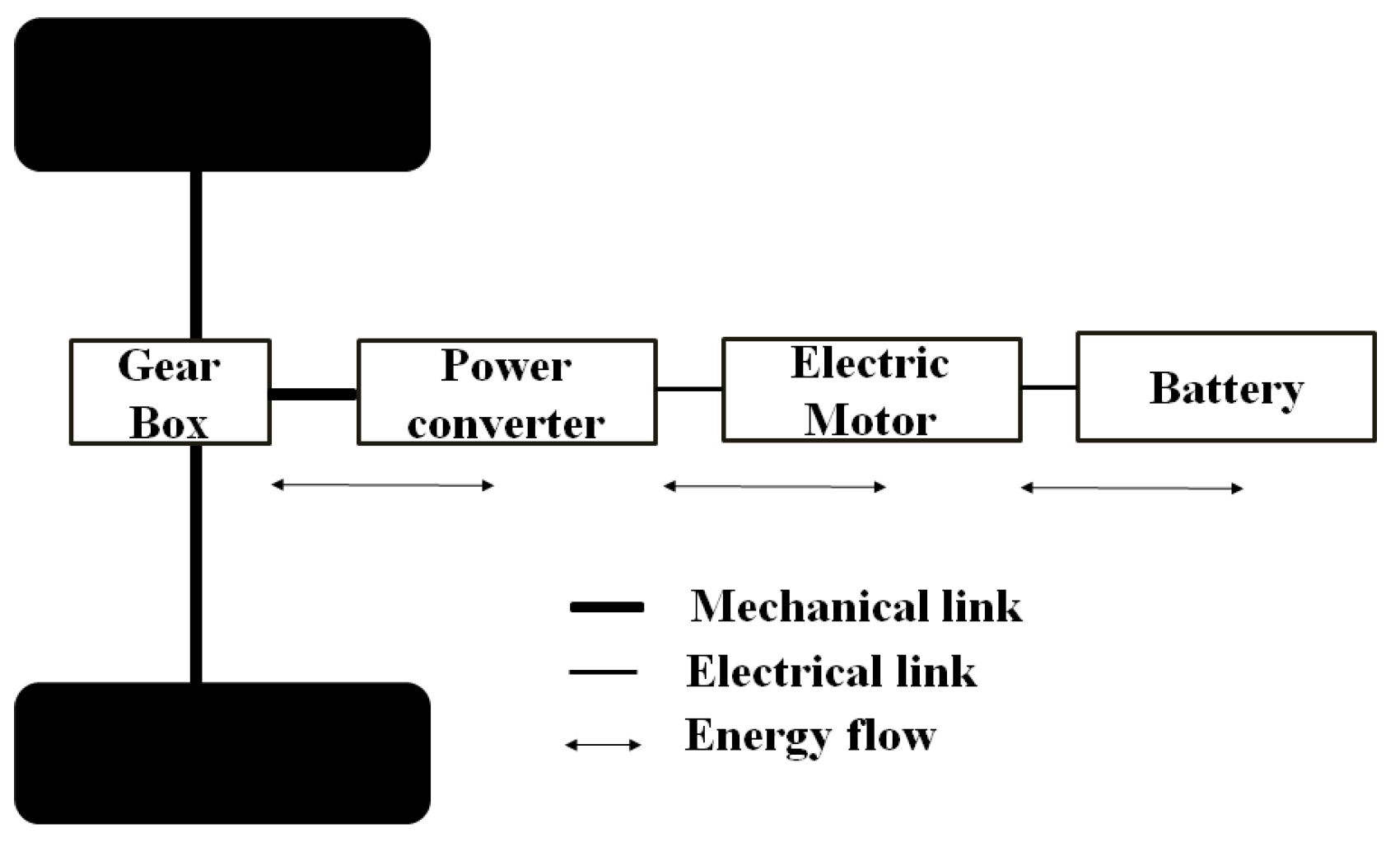


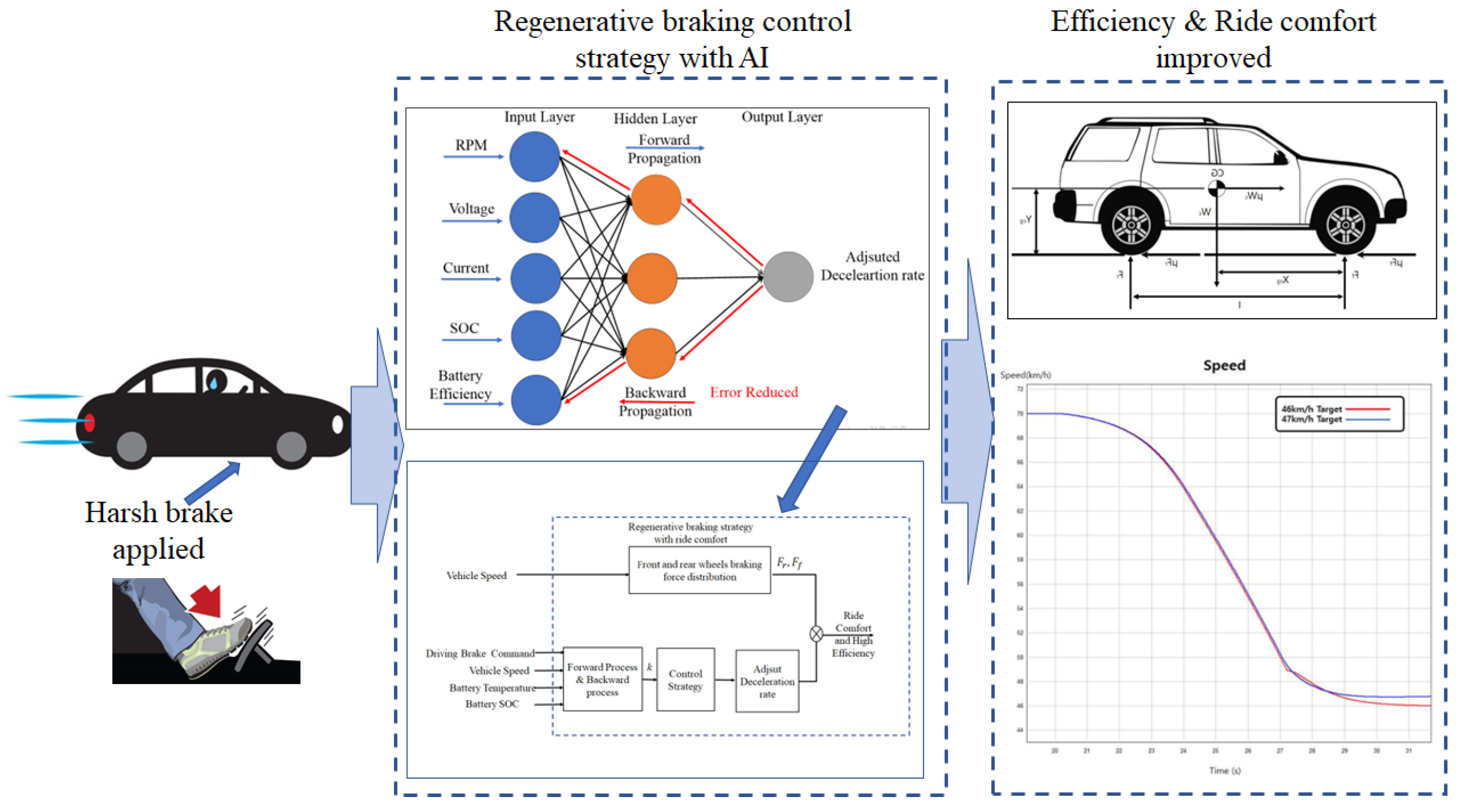

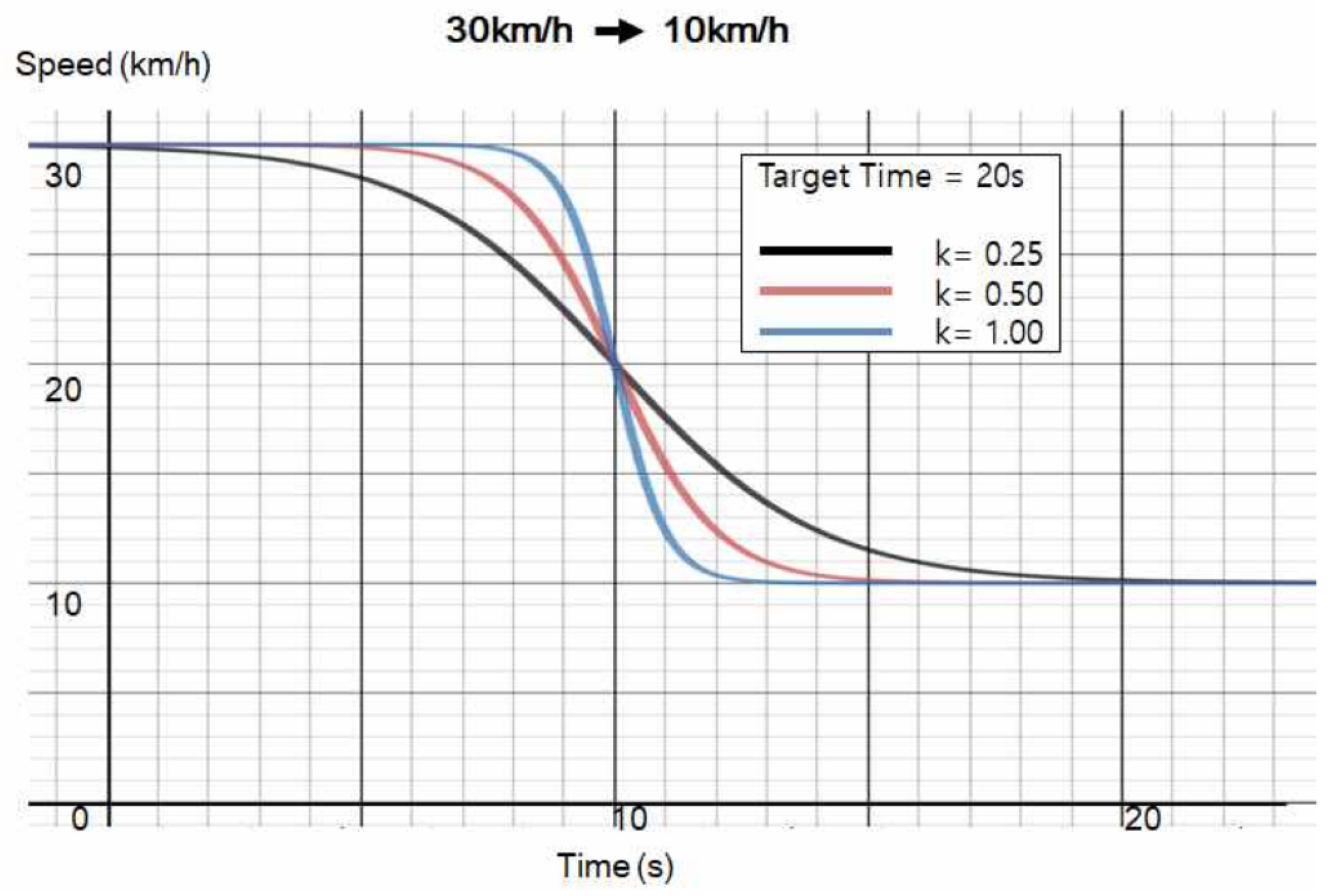
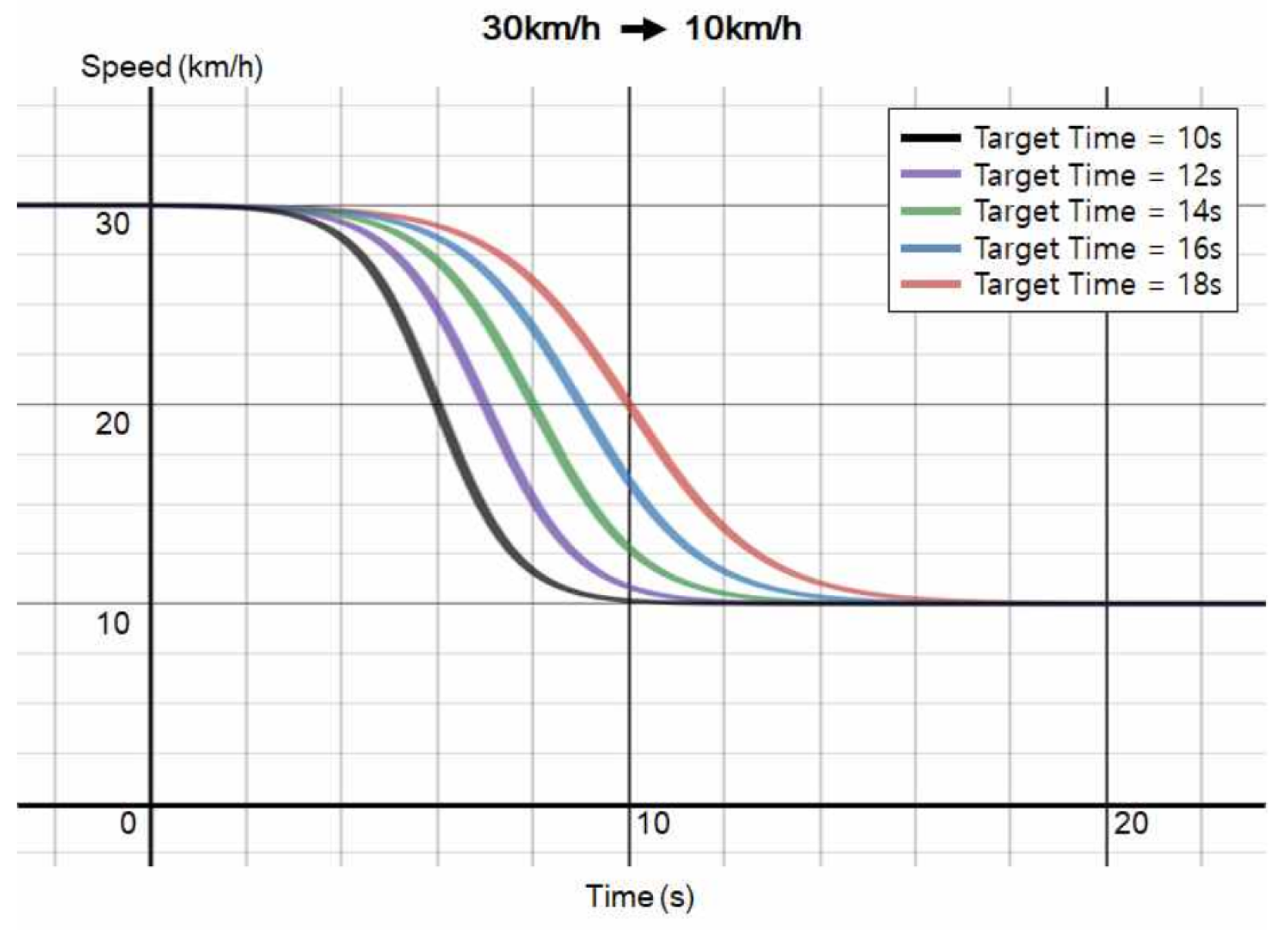

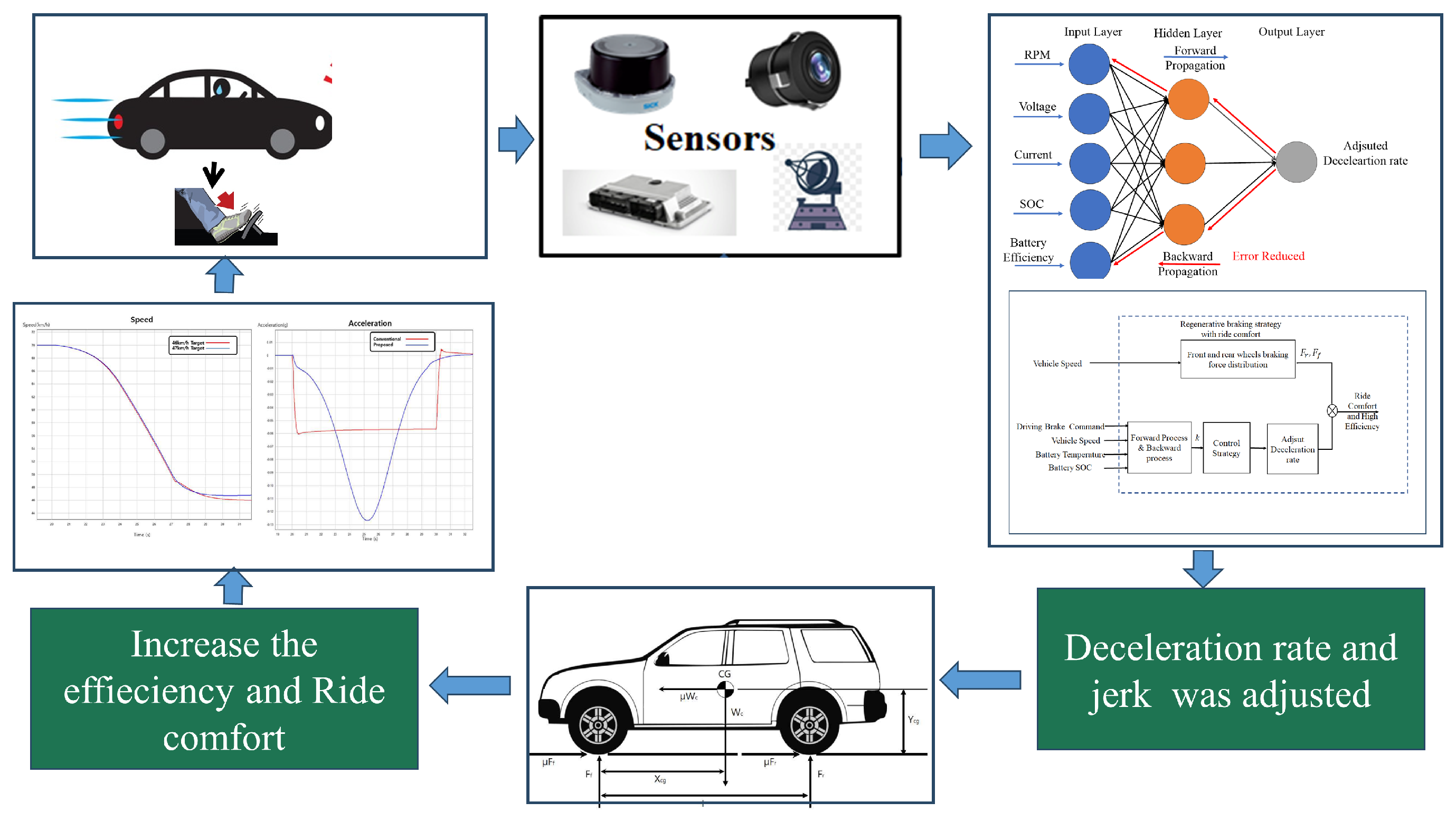
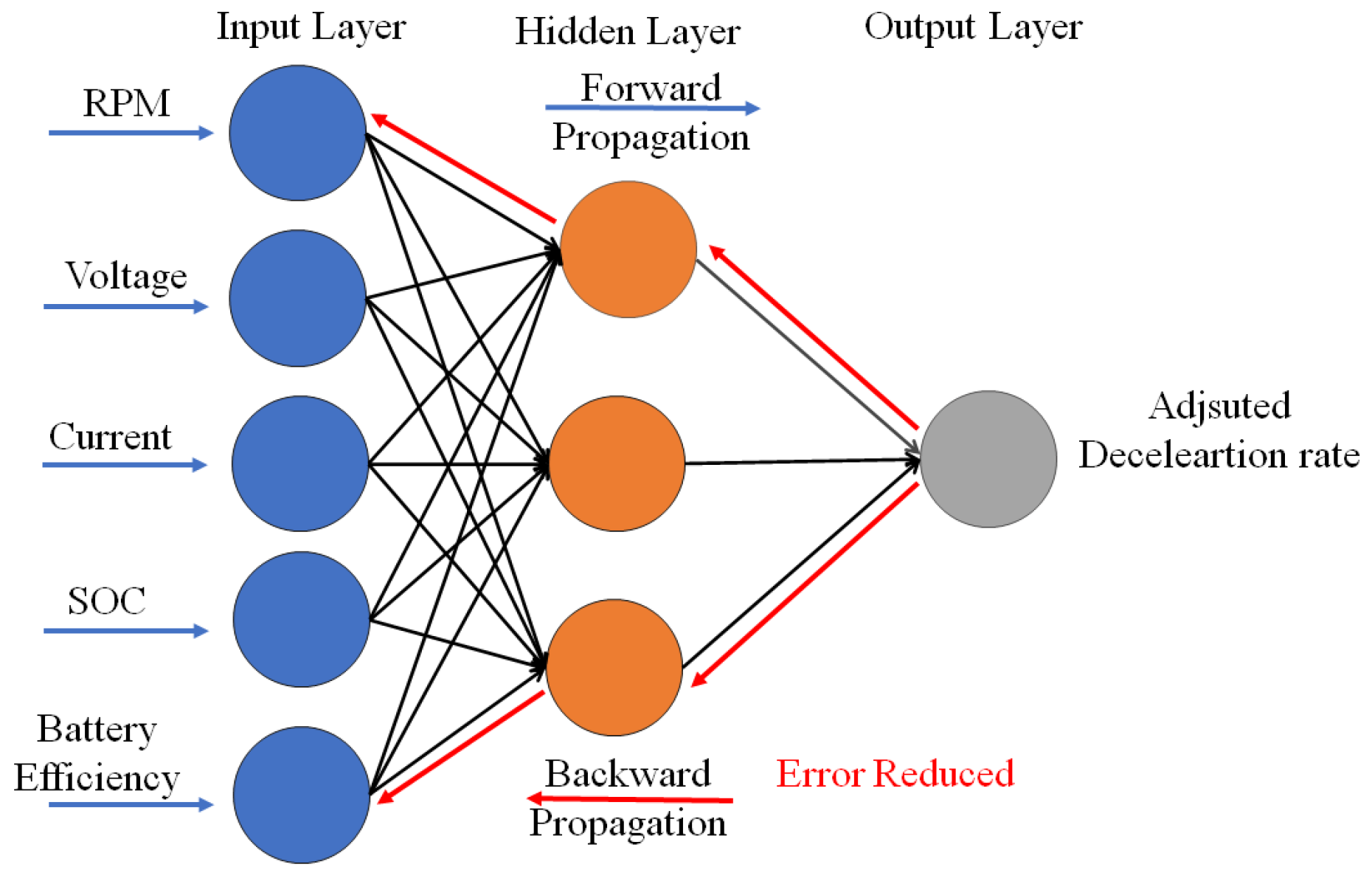
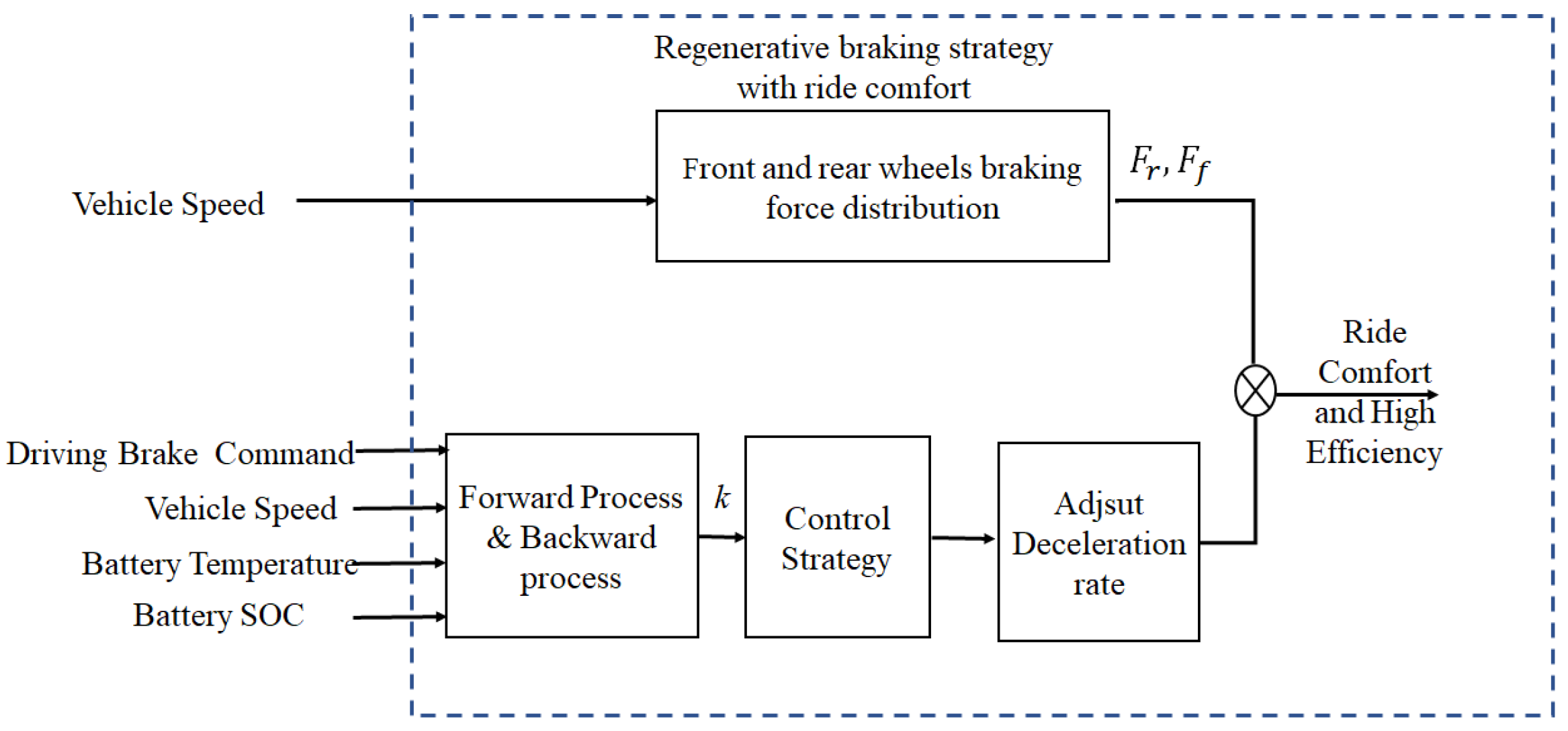

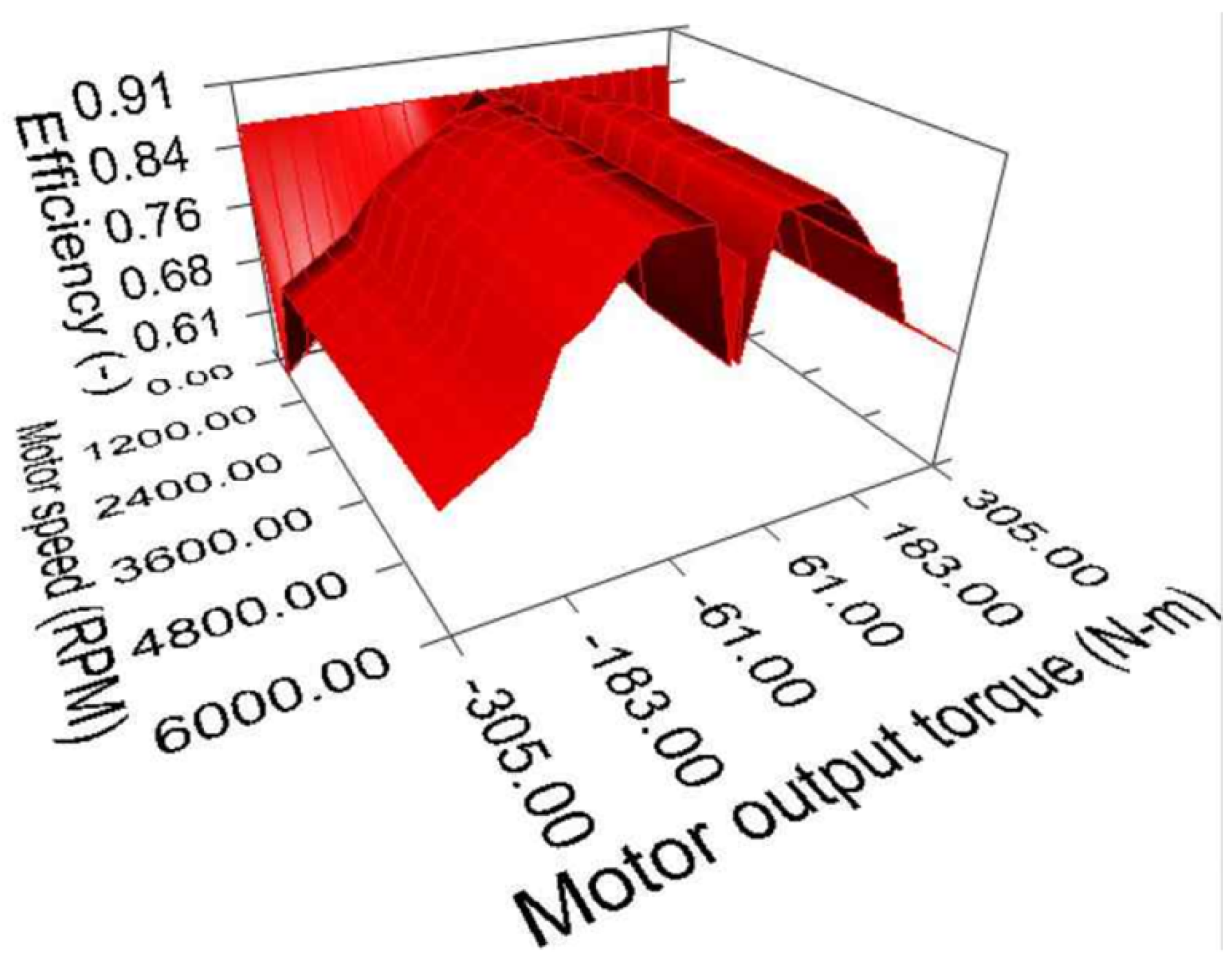
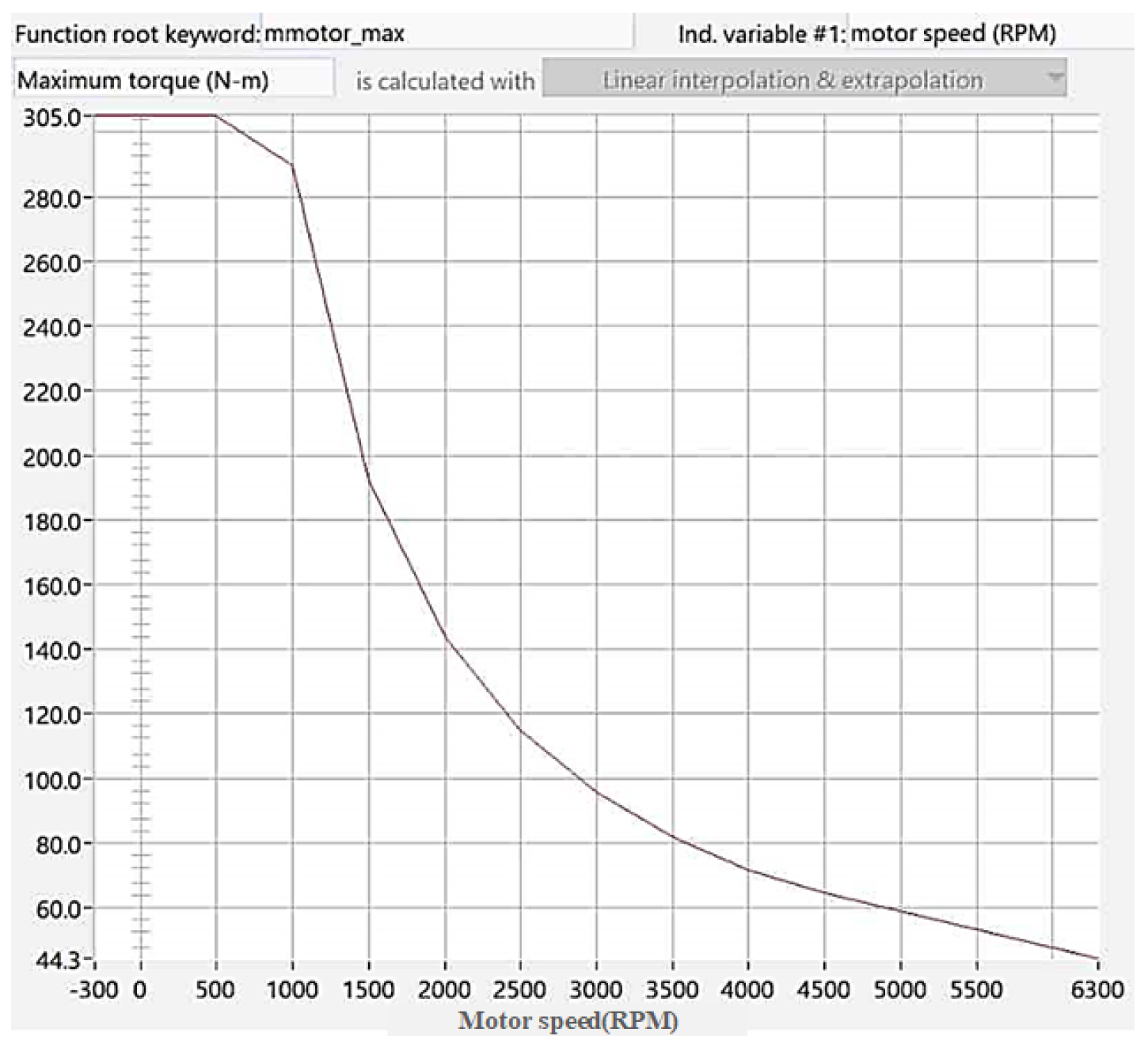


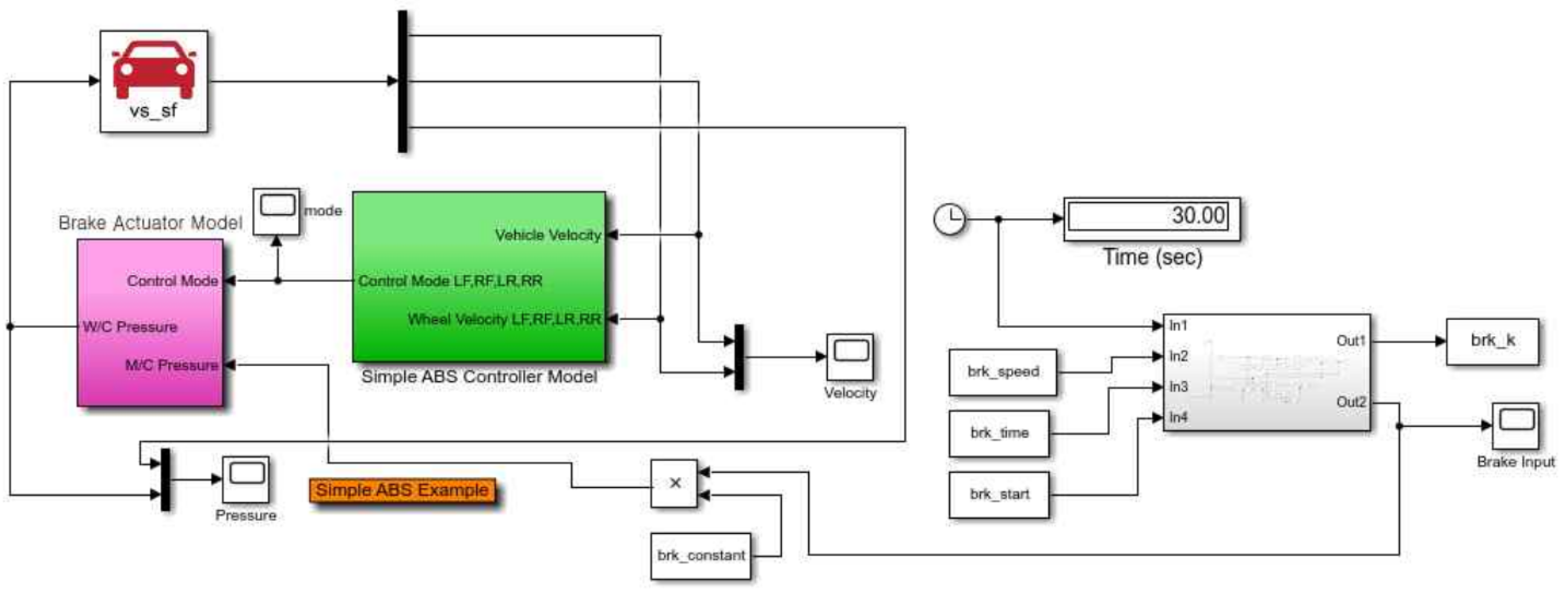
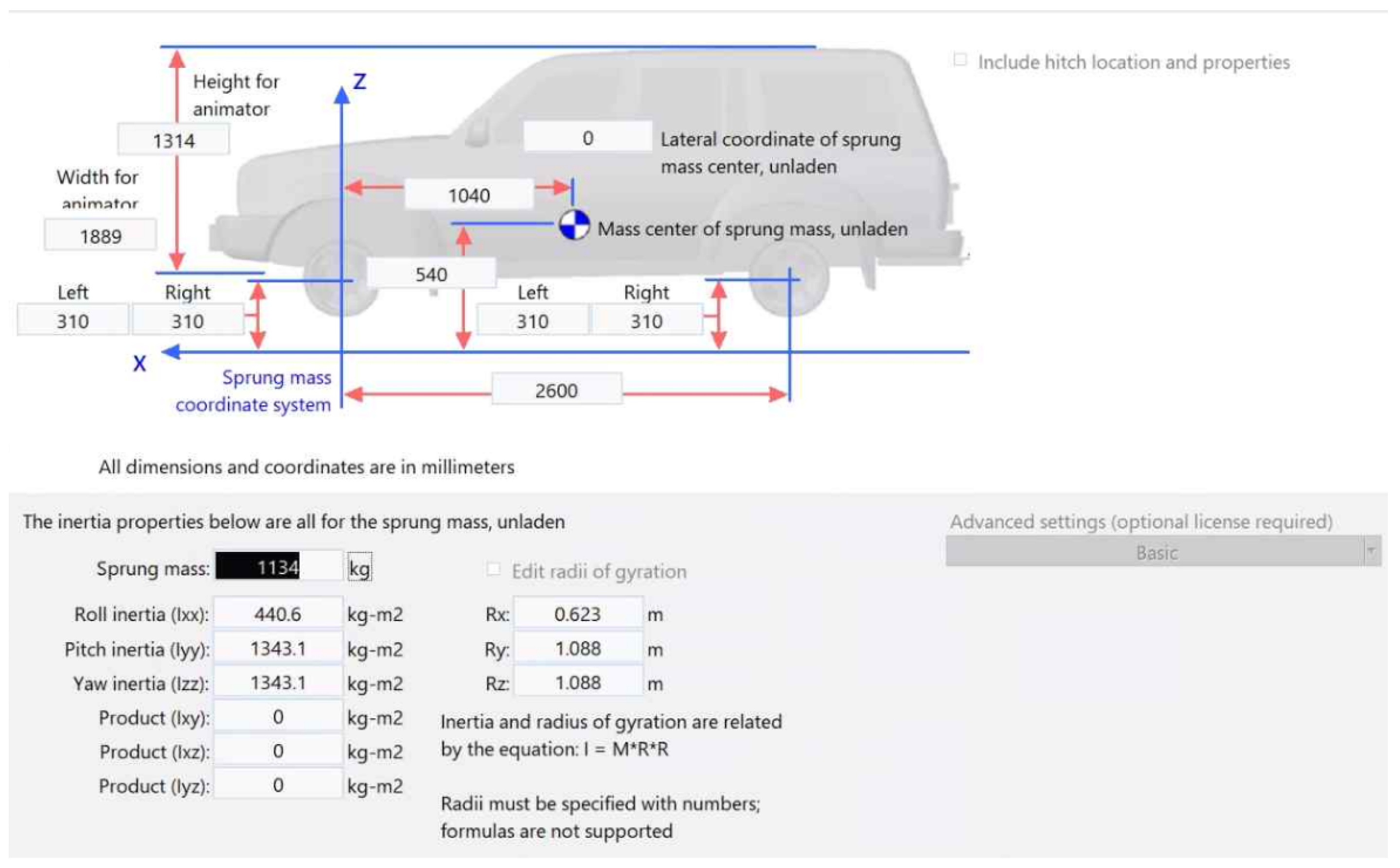
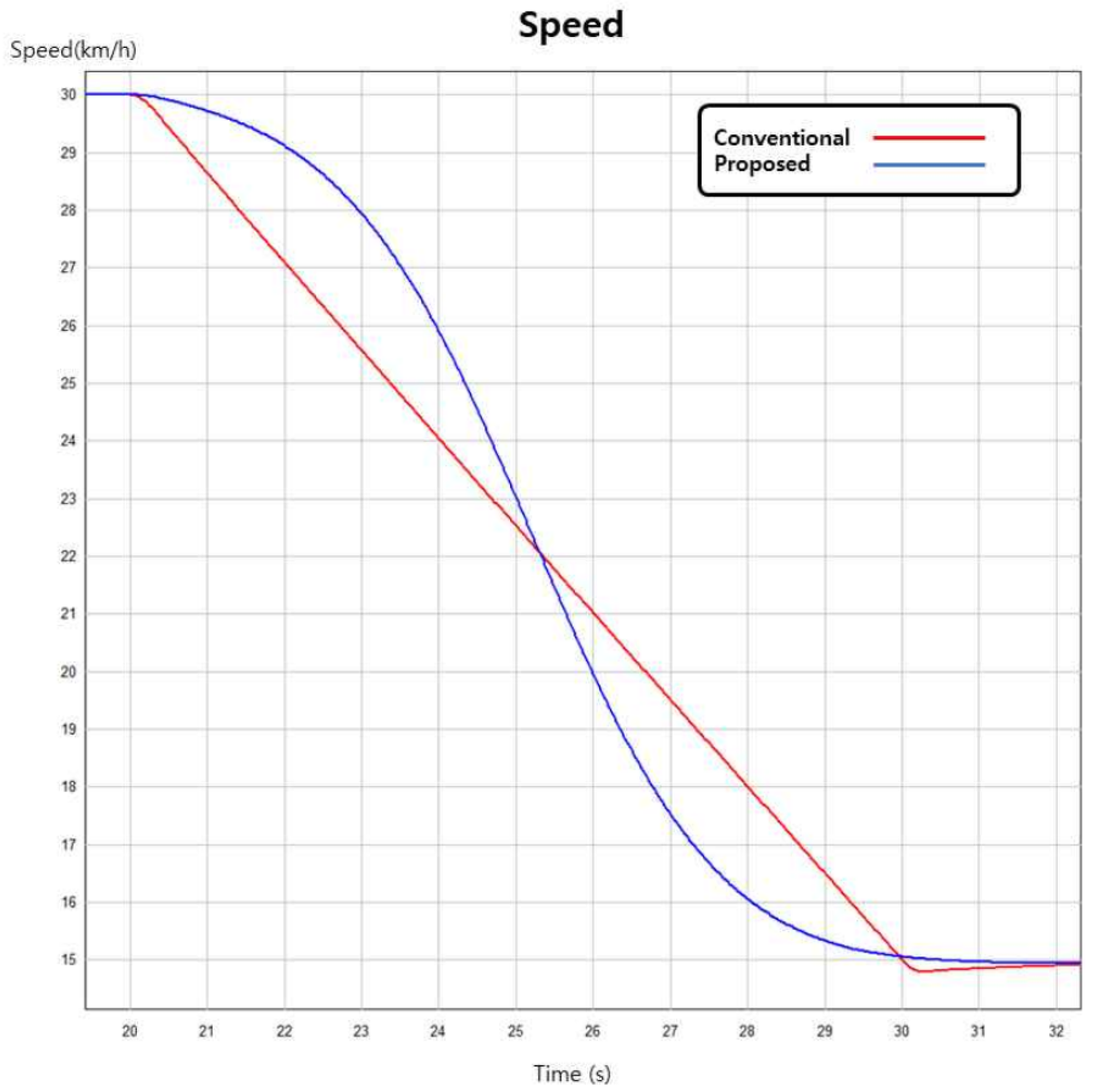
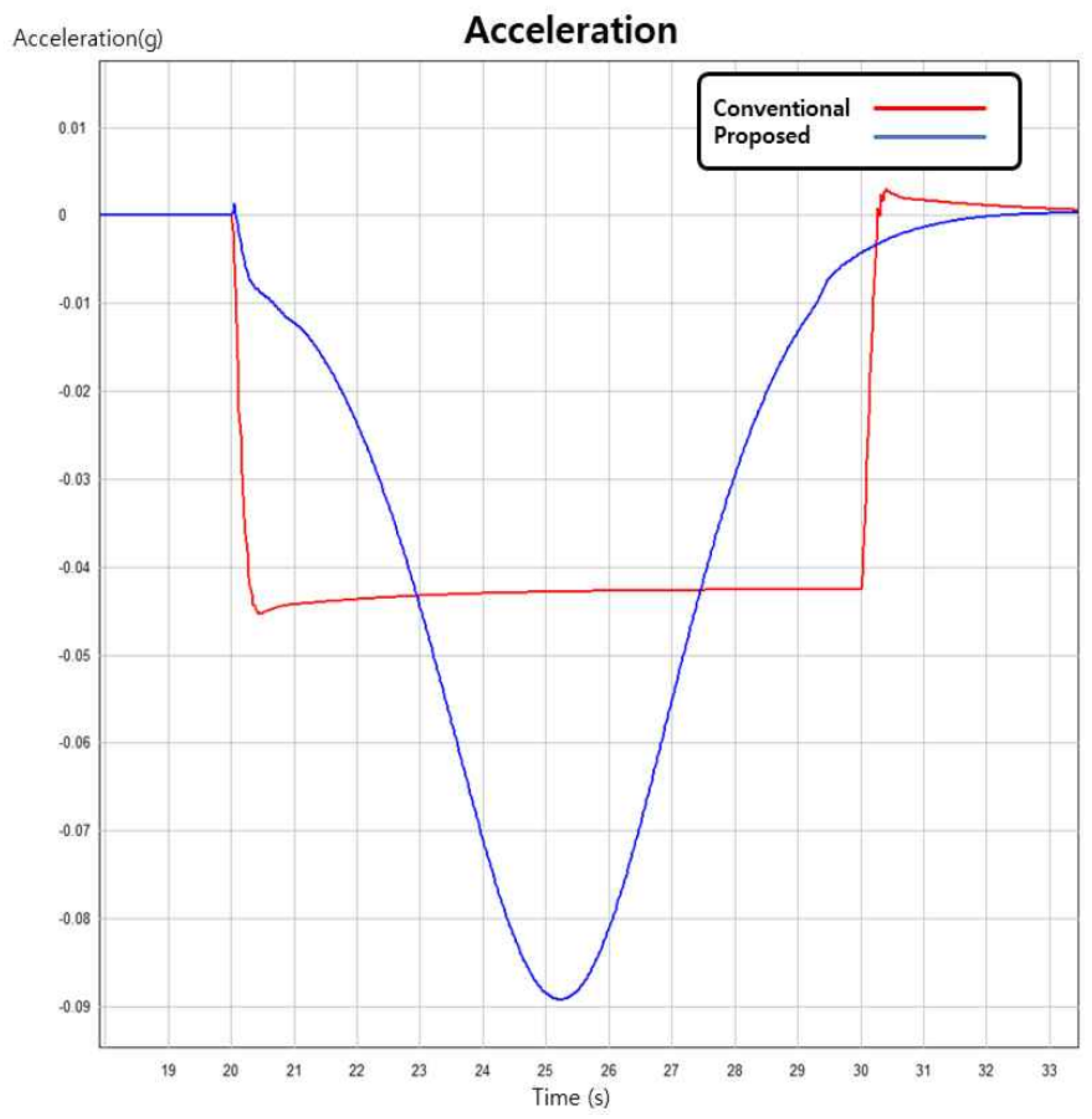
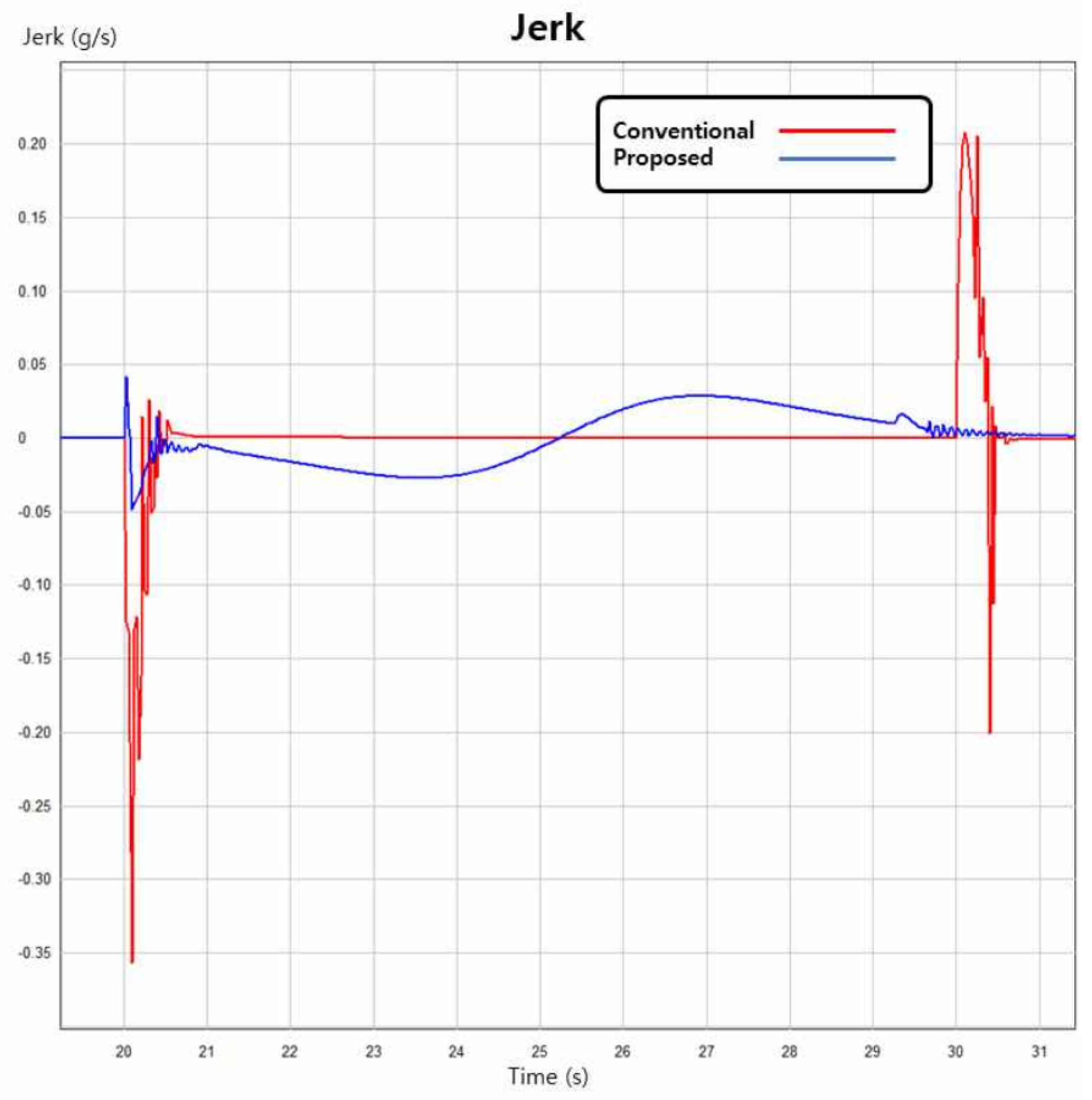

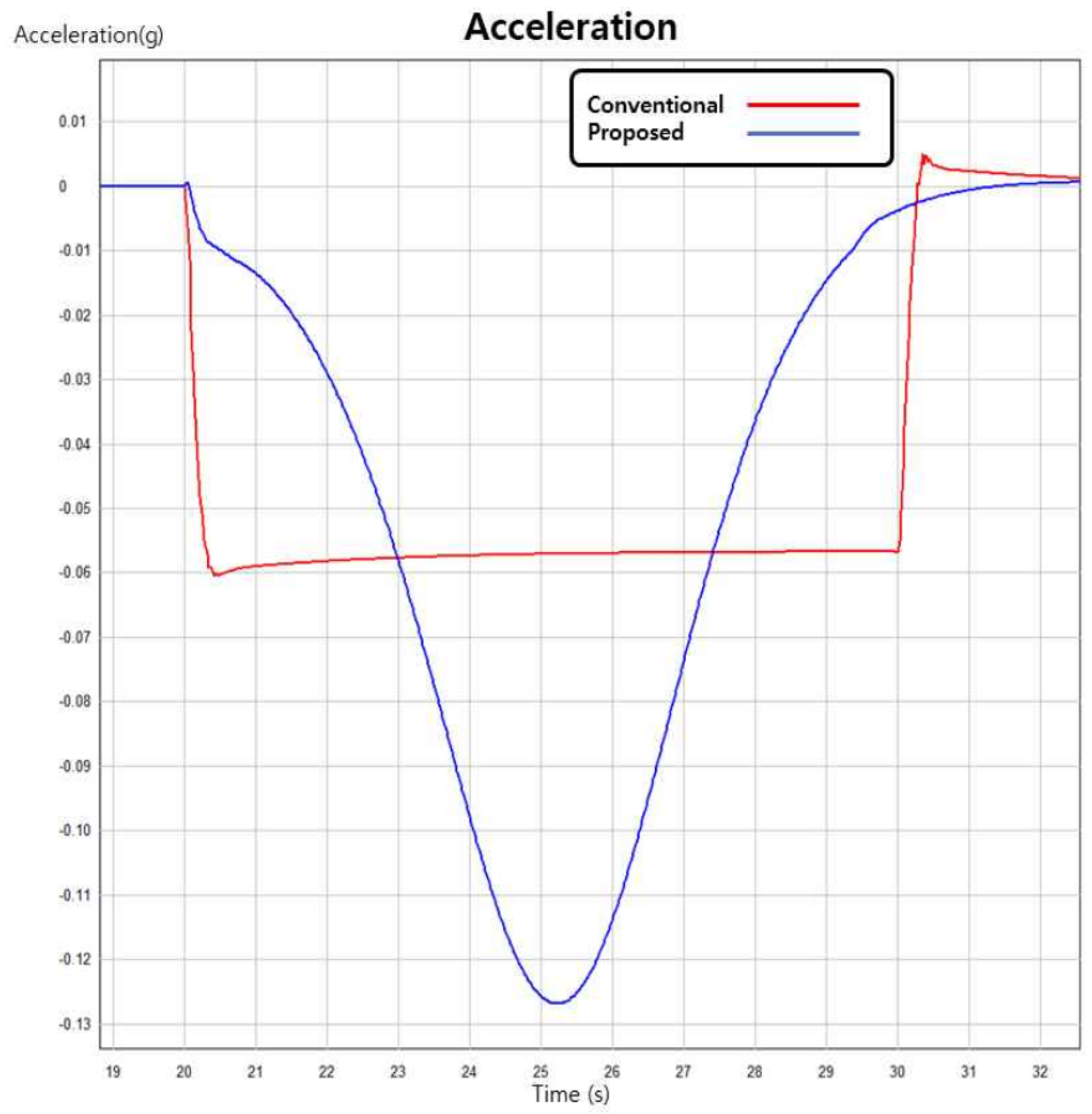

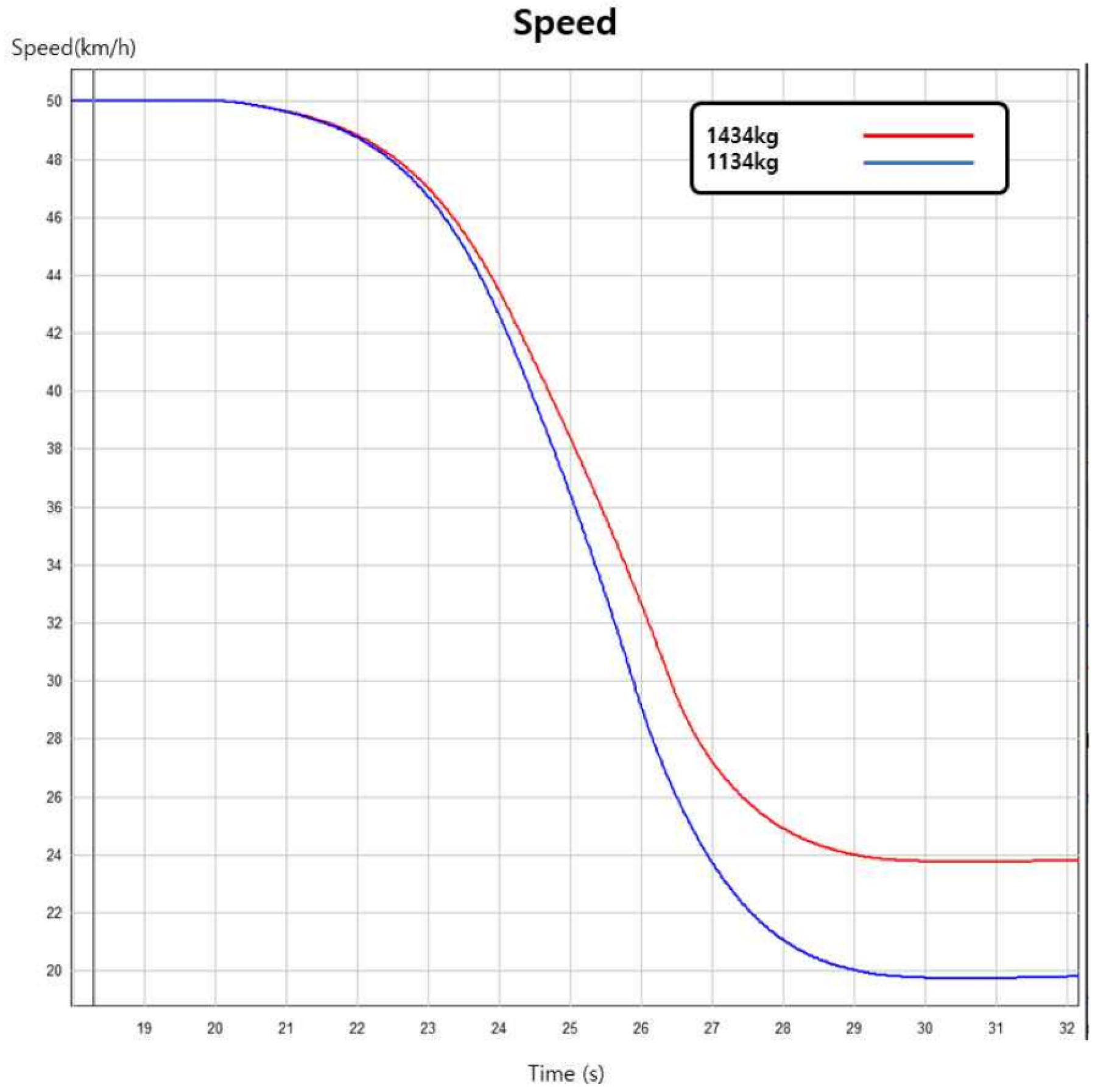

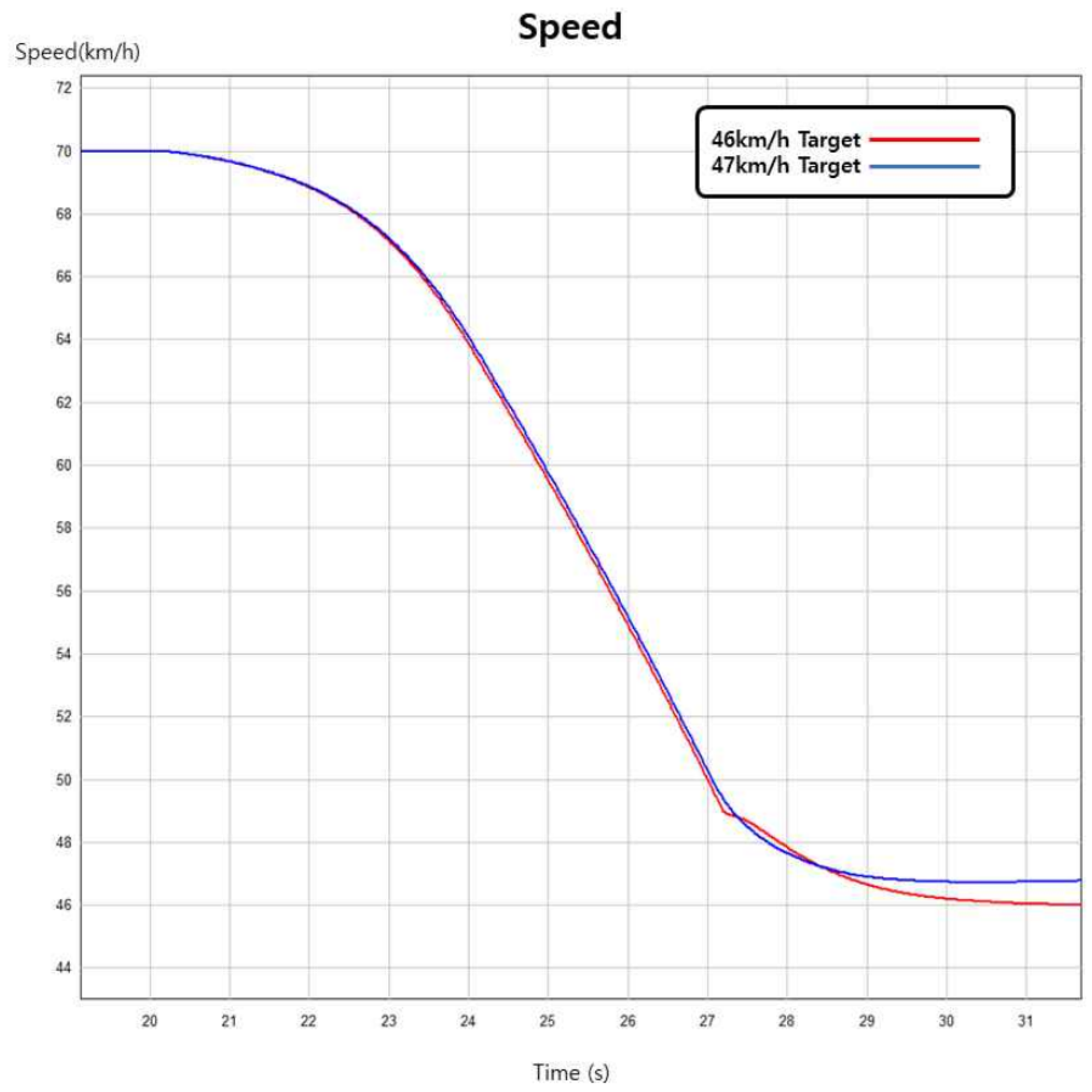
| Weighted RMSA | Rating | Human Sensation |
|---|---|---|
| Less than 0.135 m/s2 | A | Comfortable |
| 0.135 to 0.63 m/s2 | B | Slightly uncomfortable |
| 0.5 to 1.0 m/s2 | C | Fairy Uncomfortable |
| 0.8 m/s2 | D | Uncomfortable |
| 1.25 to 2.5 m/s2 | E | Very Uncomfortable |
| Greater than 2.0 m/s2 | F | Extremely Uncomfortable |
| Conditions | Deceleration | Jerk |
|---|---|---|
| Conventional | −0.04 g | 0.35 g/s |
| CRBS Method | −0.09 g | −0.05 g/s |
| Conditions | Deceleration | Jerk |
|---|---|---|
| Conventional | −0.05 g | 0.39 g/s |
| CRBS Method | −0.125 g | −0.12 g/s |
Disclaimer/Publisher’s Note: The statements, opinions and data contained in all publications are solely those of the individual author(s) and contributor(s) and not of MDPI and/or the editor(s). MDPI and/or the editor(s) disclaim responsibility for any injury to people or property resulting from any ideas, methods, instructions or products referred to in the content. |
© 2023 by the authors. Licensee MDPI, Basel, Switzerland. This article is an open access article distributed under the terms and conditions of the Creative Commons Attribution (CC BY) license (https://creativecommons.org/licenses/by/4.0/).
Share and Cite
Hwang, M.H.; Lee, G.S.; Kim, E.; Kim, H.W.; Yoon, S.; Talluri, T.; Cha, H.R. Regenerative Braking Control Strategy Based on AI Algorithm to Improve Driving Comfort of Autonomous Vehicles. Appl. Sci. 2023, 13, 946. https://doi.org/10.3390/app13020946
Hwang MH, Lee GS, Kim E, Kim HW, Yoon S, Talluri T, Cha HR. Regenerative Braking Control Strategy Based on AI Algorithm to Improve Driving Comfort of Autonomous Vehicles. Applied Sciences. 2023; 13(2):946. https://doi.org/10.3390/app13020946
Chicago/Turabian StyleHwang, Myeong Hwan, Gye Seong Lee, Eugene Kim, Hyeon Woo Kim, Seungha Yoon, Teressa Talluri, and Hyun Rok Cha. 2023. "Regenerative Braking Control Strategy Based on AI Algorithm to Improve Driving Comfort of Autonomous Vehicles" Applied Sciences 13, no. 2: 946. https://doi.org/10.3390/app13020946
APA StyleHwang, M. H., Lee, G. S., Kim, E., Kim, H. W., Yoon, S., Talluri, T., & Cha, H. R. (2023). Regenerative Braking Control Strategy Based on AI Algorithm to Improve Driving Comfort of Autonomous Vehicles. Applied Sciences, 13(2), 946. https://doi.org/10.3390/app13020946






